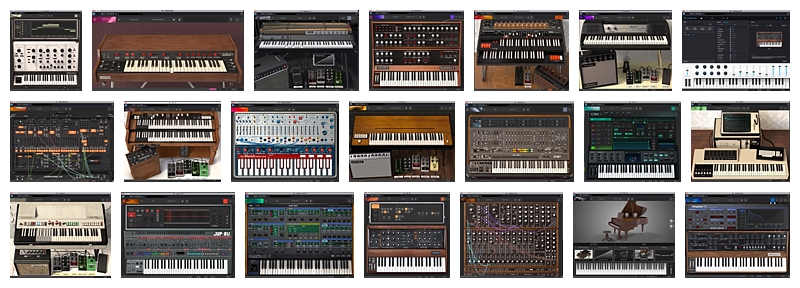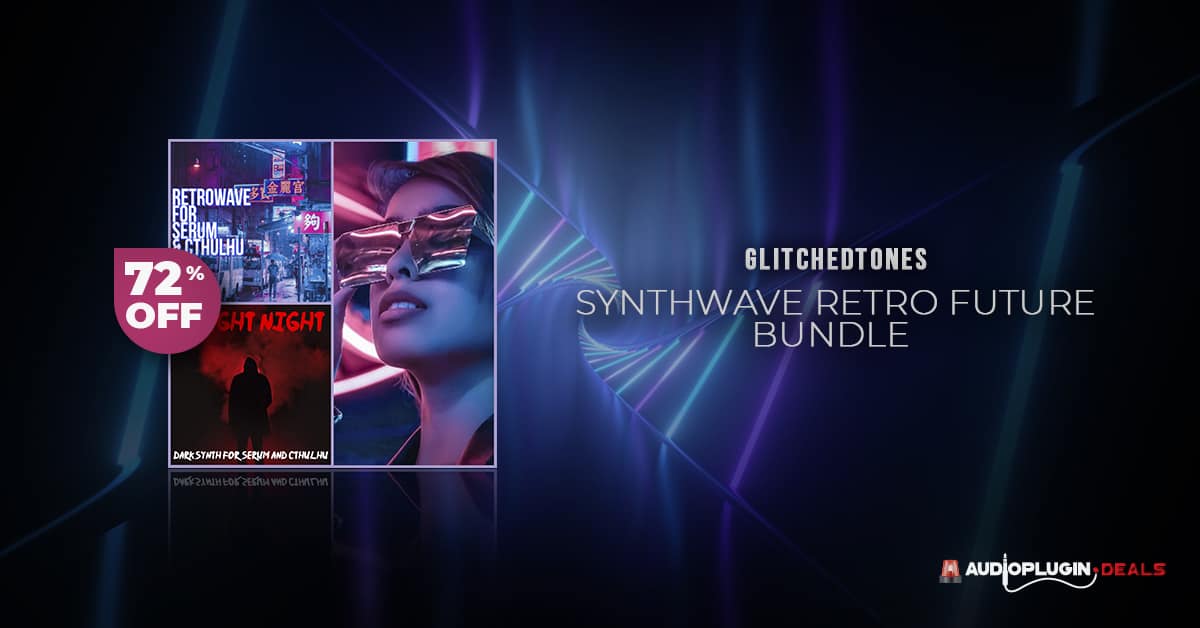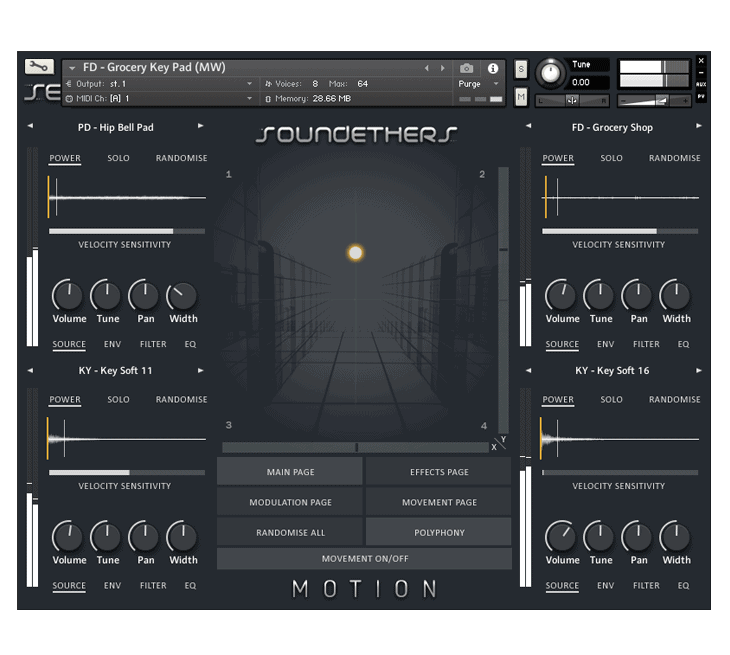Nagoya Harp by UVI Review
UVI, the makers of VINTAGE VAULT 2, Falcon, World Suite, and other virtual instruments have released Nagoya Harp. I would describe this instrument as a hybrid between a typewriter, zither, and mountain dulcimer.
A Nagoya Harp is similar to a Bulbul Tarang which I know from my several visits to India. You can play UVIs Nagoya Harp traditionally (strummed) or as an analytical instrument with advanced harmonic variations. UVI granted a review copy with no strings attached.

Nagoya Harp – Installation
After purchase, UVI or if selected a reseller will send you a code that you can use to register the library with UVI and as well attribute Nagoya Harp to your iLOK account (free, dongle not required).
After downloading and activating the library in iLOK you can use the library within UVI Workstation version 2.6.15+, and Falcon version 1.4.1+.

Sound
After purchase, UVI or if selected a reseller will send you a code that you can use to register the library with UVI and as well attribute Nagoya Harp to your iLOK account (free, dongle not required).
After downloading and activating the library in iLOK you can use the library within UVI Workstation version 2.6.15+, and Falcon version 1.4.1+.

Nagoya Harp – Sound
The Nagoya Harp is a type of string instrument that originated in Japan. It is similar to the Indian Bulbul Tarang, which is a type of string instrument that originated in India. The Nagoya Harp can be played traditionally (strummed) or as an analytical instrument with advanced harmonic variations.
The Nagoya Harp has a shorter neck and a smaller body than the Bulbul Tarang, and it has fewer strings. The Nagoya Harp is tuned to the pentatonic scale, whereas the Bulbul Tarang is tuned to the chromatic scale.
The Nagoya Harp is typically played with the fingers, whereas the Bulbul Tarang is typically played with a pick. The Nagoya Harp is a traditional Japanese instrument, and the Bulbul Tarang is a traditional Indian instrument.
UVI’s Nagoya Harp was recorded, edited, and sound-designed by Kevin Guilhaumou, Alain J Etchart, and Floriane Palmkrantz. Overall more than 20,000 samples were recorded.
The sound files have been originally 21isch GB in size and compressed to close to 7ischGB. When recorded the Nagoya Harp player used a plectrum, bow, sticks, palm muting, hammer, and various una corda configurations. Olivier Tristan and Remy Muller do software and scripting development.
Nagoya Harp includes Strum and Keys. With Strum, the more usual playing style is imitated. Or you can use the library as an analytical instrument and have access Una Corda High-String, Una Corda Low-String, Palm Muted, Sticks and Bowed tones. Nagoya Harp also offers a variety of keys to play with, including sustain, staccato, and pizzicato. The kontakt player sample library contains a wide range of articulations and playing techniques, allowing for a diverse and dynamic musical experience. Whether you are a beginner or an experienced harpist, the Nagoya Harp kontakt player sample library has something to offer for everyone.
The usual UVI effect system (Chorus, Convolver, Delay, Equalizer, Overdrive, Phasor, and Reverb) is available in Nagoya Harp allowing you to mangle further and shape the sounds.
Nagoya Harp includes Strum and Keys. With Strum, the more usual playing style is imitated. Or you can use the library as an analytical instrument and have access Una Corda High-String, Una Corda Low-String, Palm Muted, Sticks and Bowed tones.
The usual UVI effect system (Chorus, Convolver, Delay, Equalizer, Overdrive, Phasor, and Reverb) is available in Nagoya Harp allowing you to mangle further and shape the sounds.

You can mix a mono signal, a stereo signal, and stereo ambient microphone recordings (Royer SF-24(Stereo Ribbon Mic), Neumann U67(Tube Condenser Microphone), and Bruel&Kjaer 4006 (Omnidirectional Microphone)).
If you use Falcon, you can add your own Falcon effect and further shape the instruments. With all the possible Falcon effects you can take the sounds to a new entire unconventional level.

User interface & Usability
Nathaniel Reeves, the designer of the Interface, has done an excellent job. The layout is comfortable and easy to use, while still maintaining a typical UVI (French) style.
This style is known for its simple design and great usability. The end result is a product that is both easy to use and great to look at. Thanks, Nathaniel!

Conclusion
The Nagoya Harp is a type of string instrument that originated in Japan. It is similar to the Indian Bulbul Tarang, which is a type of string instrument that originated in India. The Nagoya Harp can be played traditionally (strummed) or as an analytical instrument with advanced harmonic variations.
The Nagoyaocination is the art of drawing logical conclusions from premises. It is the process of using reason to arrive at a conclusion.
The bright and versatile sound of the ethnic instrument can be a great addition to any score. The authentic sounding of the instrument can help to add other tones and uniqueness to your score.
The instrument can be stacked with traditional instruments to add other tones and uniqueness to your score. The ethnic instrument can also be used to add other tones and uniqueness to your score. The versatile sound of the ethnic instrument can help to add other tones and uniqueness to your score.
The Nagoya Harp is a versatile and authentic-sounding instrument that can add a unique touch to your music. This ethnic and non-traditional instrument can be stacked with traditional instruments to create a Japanese or broader Asian sound.
The Nagoya Harp can help you create an authentic-sounding score that will appeal to customers who are looking for actual ethnic music. With its bright sound and wide range of tones, the Nagoya Harp is an ideal choice for adding a touch of Asia to your music.
Rating: Four out of five stars
Nagoya Harp is a bright-sounding, versatile, and authentic ethnic-sounding instrument. This ethnic and non-traditional instrument can be stacked with traditional instruments to add other tones and uniqueness to your score.
As a principal instrument, you can create a Japanese or broader speaking Asian sound for your customer that look for actual ethnic music.










